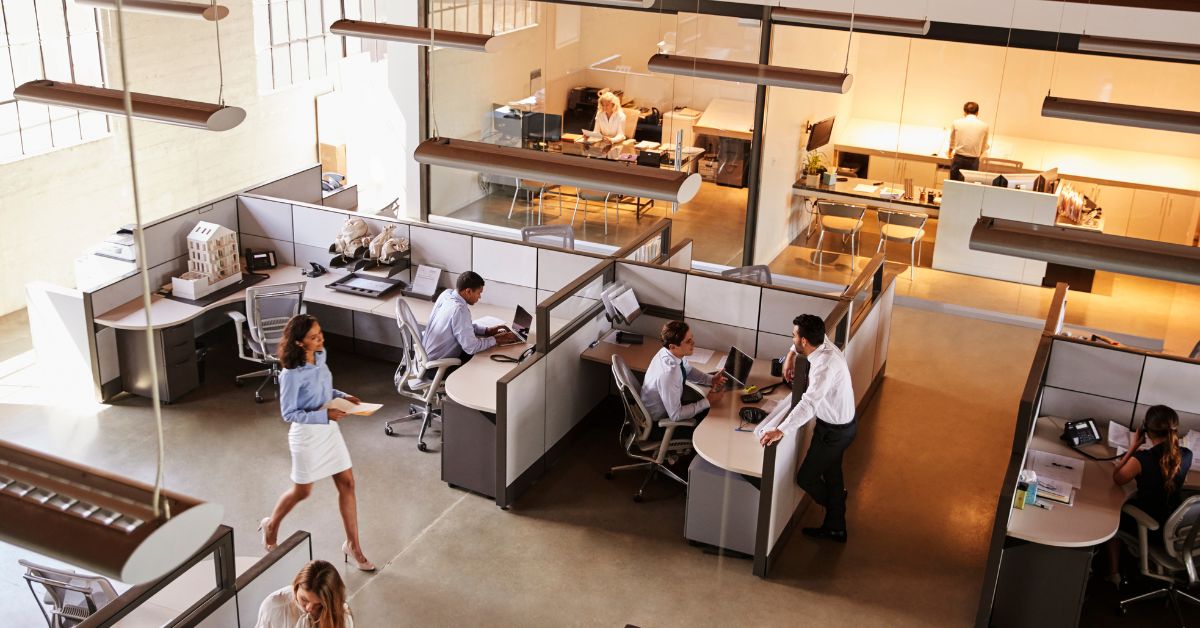Office owners understood a simple truth: to increase the efficiency of employees; it is necessary to create the most comfortable conditions. Work comfortably, and most importantly, pleasantly. With its help, it can delimit and divide the workspace into zones. No significant changes or special permissions are needed.
Advantage
- Simple mounting;
- Trouble-free disassembly when moving;
- Easy transformation if needed.
The main types of office partitions
- Transformable;
- Stationary;
- Mobile.
The subtleties of choosing office partitions
To choose office partitions, special attention should be paid to the materials used since, depending on this, the finished structures can be transparent, translucent, opaque, or combined. Sometimes glass walls are doubled for better sound insulation, and horizontal blinds are used for this. Often storefronts are replaced with such partitions and are also used in entertainment complexes. As part of glass partitions, swing or sliding doors, roller shutter mechanisms, and turntables may be used. Office Partitions Bristol is a good choice for office partitions.
Correctly approach the zoning of the room, and the overall interior will look stylish and impressive. When it comes time to choose partitions should especially carefully approach the issue of their safety, strength, fire resistance, and environmental friendliness. They will save time and money; they are not tied to any room, because when a move can always take them with them.
Types of Partition
- Transparent
- Deaf (combined)
- With shutters
Design features: Transparent
Stationary transparent partitions are glass walls. They divide the room into independent offices, defining work areas and providing acoustic insulation.
Transparent partitions are durable and stable while letting in plenty of light and providing visual control of the room.
Design of the partition, the Office Partitions Bristol can provide for the absence of a frame (the fasteners are located directly on the glass) or be a system of load-bearing metal profiles filled with light-transmitting material. Office partition frames can include steel, aluminum, wood, plastic, and MDF profile.
Deaf (combined)
Deaf or combined Office Partitions Bristol is installed for good visual separation of office space, unlike transparent ones; they almost do not open a view inside the separated zone to strangers. These partitions provide excellent sound insulation.
Blind partitions can be designed with single or double infill, completely opaque, or have matching panels with transparent inserts.
With shutters
This type of screen combines the advantages of the two previous types. The Design of such partitions consists of sheets of glass and blinds built into them. This allows adjusting the degree of transparency of the separate zone, getting the effect of transparent or solid partitions in a few seconds, and also provides sound and heat insulation of the room.
Weight and dimensions of the different types of office partitions
Transparent Office Partitions Bristol has unlimited widths, and the maximum height is 6m. Various sizes can be selected depending on the types of structures and customers’ wishes. But, as a rule, single partitions are made with a width of 1-1.5 m. The weight of the glass partitions will depend on the thickness and type of glass chosen, as well as the importance of the frame structure or its absence. The maximum height can reach 3 to 6 meters. This office partition depends on the frame’s weight, structure padding, dimensions, and a number of sheets.
Louvered office partitions are sized based on the width and height of the opening, the number of sections, and the type of glass. The minimum dimensions of the blinds are horizontal – 250 mm, vertically – 100 mm, and the standard width of the slats is 16 mm and 25 mm. The weight of this Design depends on the frame and fillers, the material of the blinds, and other elements.




